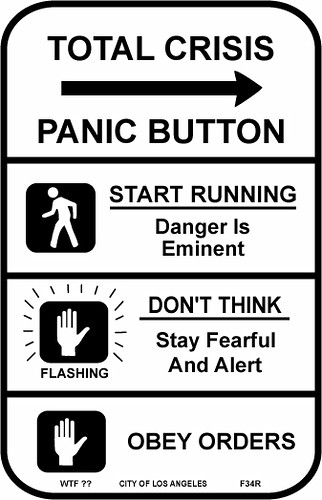What constitutes a crisis at your company?
Over the years I have seen many companies struggle with this definition. There were times, when I was younger and more energetic, that I thought that having to define what constituted a crisis was an essential part of establishing a working BC and Crisis Management capability.
In most cases it was really a lot of wasted effort, mostly it set the trigger points for a massive re-organization from the BAU management team to the ‘Crisis Management Team’.
Having been through a number of re-organisations in the workplace – I am convinced that this level of disruption and confusion is not what we should seek to create in response to being confronted by some type of bad event or crisis.
Recently I read some material that provides a more practical, and at times radical view of how we need to lead and manage in a crisis.
Did you ever think that those military-inspired approaches to Crisis Teams may not be the best idea?
Then you should read some of the work of Edward Borodzicz. He is Professor of Risk and Crisis Management at Portsmouth Business School. Amongst other credits he presented at a BCI Workshop on Crisis Management (July 2010). Here is a link to his book : Risk, Crisis and Security Management
He offers an intersting insight into what may be a very important difference between an emergency and a crisis – two situations that we often see as interchangeable.
- Emergency
- is a structured situation that requires the rapid application of plans and procedures that have been pre-arranged.
- Crisis
- is an unstructured, or badly structured situation.
- it requires that we re-arrange our plans, procedures and resources
- Disaster
- if where the situation requires a response that overwhelms the capability of our resources
- when we have to ‘call for the cavalry’ to come and bail us out
He makes the observation that some crisis may start out as, or look like, an emergency. But to continue treating them as an emergency actually makes the situation worse.
An emergency is where you follow the rules, a crisis requires leaders and possibly rule breakers.
Borodzicz is promoting the need for flexibility as a key ingredient for a Crisis Management Team. This will mean, for many companies, taking a different approach to the training of the Crisis Team. Developing a generic approach and flexible response will put a greater focus on a good mix of leadership to respond to the crisis.
More simulations exercises and role-play in different situations – even events that we have not “planned for”. Less of the plan-walkthrough and similar type of exercises.
As somebody who has spent many years designing and delivering these type of Executive Crisis exercises I look forward to a new and expanding market.
This also fits very nicely with the concept of resilience and the need to develop an ‘adaptive capacity’.
Essentially resilience is more about your attitude than a structured system, don’t you think?

I agree with breaking the 101-level rules in managing many crises. This is why I more strongly favor crisis management leaders/teams over crisis management plans: http://www.jamesjdonnelly.com/2010/05/go-team/
I also agree this requires different types of training and testing beyond plan compliance. (And it must be noted that simulations are NOT trainings…they are tests to uncover gaps.) Here’s another blog post where I outline different types of trainings: http://www.jamesjdonnelly.com/2010/01/crisis-management-training-choose-wisely/
I hope these links help.
Thanks for the comment, and the links James – will go and check those out. Your point about simulation as a means to discover gaps rather than as training is interesting. I agree that they are great for that purpose, but have also found them very useful for training. Not as a means to teach skills per se, but as a means to practice skills and understand team dynamics. Debrief and follow up are important aspects to support this.